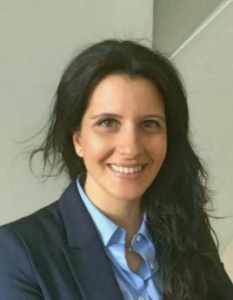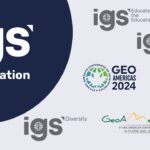
The IGS is a global community made up of a diverse body of people involved in diverse markets. Ensuring the Society adequately supports the needs of its 45 Chapters and more than 2,500 members is key.
Being Representative is one of the four main goals set out by the IGS in its recently released Strategy Report 2022-2026. The report outlines ambitious targets for the years ahead to ensure the Society is future-proof and fit for purpose.
Here, IGS Secretary General Laura Carbone explains the importance of inclusivity.
Hi Laura. Tell us more about the IGS plans for being more Representative.
We have three main foci here. We want to grow the number of individual members but particularly more young professionals and building a pipeline of student members. At the same time it is important to increase our Corporate Membership especially in under-represented markets. Finally we want to focus on helping our existing Chapters thrive. We want to do this by encouraging more flexible Chapter models and governance.
Why these particular aims and how will they be achieved?
The membership is our lifeblood. We bring together a diverse group of people spanning academia and all facets of the industry. This is also true of organizations – whether they join us as Corporate Members, or whether their involvement is limited to activities at a national level. We need to make sure that our membership reflects the full spectrum of research and practice so that we can be confident we are truly the home of geosynthetics. We can only achieve this through our network of Chapters, so we have set a goal of ensuring that we help our Chapters thrive.
In which under-represented markets will you be prioritising growth?
When you look at our Chapter membership numbers compared to market size, it’s clear we are under-represented in China and India in particular, although we do have a strong member base across the Asia region. And considering that Africa can expect massive investment in infrastructure as it continues to urbanise, we should look to grow membership there.
You say you’ll be more flexible with chapter models and have lighter governance. How will this work?
This is something we will look into further as part of a workstream to review our structures. In some cases, smaller Chapters have struggled to function as we have set relatively high requirements for the number of officers they should have, and there are countries where it can be difficult to register as a non-governmental organisation. We already have good examples of sustainable Chapters through alternative models such as incorporation under the umbrella of another established society, or regional chapters. We probably don’t need to invent anything new; it may be more a case of expanding what already works.
What are the challenges with this approach?
Every one of our aims will be a stretch. This is good, as we want to be ambitious. But each aim needs active involvement at all membership levels, and that can be difficult given we rely so heavily on volunteers. Just communicating with a dispersed membership is a challenge.
What does ‘Representative’ mean and why is this important for the IGS?
Representative means we reflect all aspects of geosynthetics. We also need to reflect markets, with strong Chapters wherever there is a large or growing demand for geosynthetics. We mustn’t forget that we need to attract and retain the next generation of geosynthetics professionals, making them feel welcome and valued. Beyond this, we need to better reflect society as a whole, so that we relate to their needs and ensure that geosynthetics deliver positive outcomes for communities. All of this ultimately keeps us relevant.
Where would you like to see the IGS in terms of being Representative by 2026?
We will have a vibrant network of Chapters, with more Chapters having more than 100 members. We will have a higher proportion of student and younger members, especially in the regions where our student numbers are currently relatively low. Once students graduate, they will want to stay with us as paying members.
How does ‘Representative’ work with the other three overall strategic goals?
We must be Representative to be confident that we understand the challenges faced by our members, and that we are delivering the services they need, whether that’s research, credentialing, guidance or practical tools. The more we represent the geosynthetics world, the more that regulators, clients and the public will listen to what we have to say, and our Influence will grow. And the more we are representative, the more people will want to join, and this will help us achieve all our goals.
How can members support this goal?
In so many ways. Every member can encourage another colleague to join the IGS. If you are in academia you could urge students to join us – it’s free! You could also ensure that geosynthetics are included in university teaching – we can help through our Educate the Educators program. If you are an employer, encourage your younger staff to join the IGS – it will help them build a network and develop knowledge that will help your business. Employers can support our Job Shadowing scheme and tell job applicants that IGS membership is an advantage.
We are always on the lookout for case studies which demonstrate the practical benefits of using geosynthetics over traditional methods. Share these with us to help us be more Influential. We need to know what is happening in the world of geosynthetics. If you become aware of new trends or market developments, or new legislation that will impact on the industry, please let us know, so that we can respond.
+++ Learn more about the IGS’s strategic aims by reading the ‘Strategy 2022-2026 Building On Firm Foundations’ report here. If you have any questions or would like more information about the report, contact IGS Executive Director John Kraus at john.kraus@geosyntheticssociety.org.
+++ Missed the first article in the series? Click here to read about our aim to become more Influential.






















